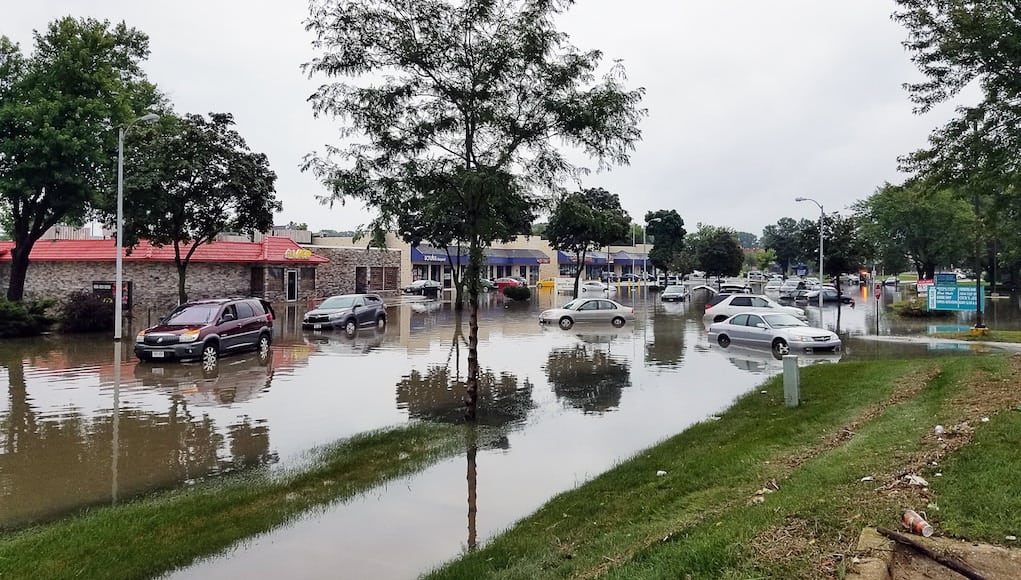When the School Doors Close: Tips for Families To Help Students Continue Learning When Disaster Strikes

By: Erin Gohl & Kristen Thorson
During the past days and weeks, Hurricane Florence has submerged homes under torrential floods in the Carolinas and entire towns have been destroyed by wildfires in the American West. Throughout our nation, families face the reality that schools, a source of structure, continuity, and growth, must close for several days, and at times longer, during such emergencies. They wait with uncertainty as communities restore what has been damaged or lost. In these circumstances, students and families are often displaced to unfamiliar surroundings and their lives are disrupted without access to electricity, cell service, or the Internet. While the school doors are closed, there are still many ways to keep school-age learners engaged in learning and to help them process what has happened.
What can you, or any caregiver, do?
Read: Read anything! Have your child read, read to your child, and let them read to you. Ask:
- What’s an interesting word you’ve seen in this book?
- What picture does the best job of showing how the character is feeling?
- If you were the author, how would you change the ending of the story?
Write: Have your child write about what has happened to your community. They could write in a journal, write a thank you note to someone who has helped them, or write a note to a cousin or friend telling about their experience.
Create: Let art be an outlet to help your child process what they have been through. Invite them to draw, paint, or construct to create their story. The artwork might become a safe way for your child to think and talk about everything that has happened. Ask:
- Why did you choose these colors?
- Who is in your artwork?
- How does this artwork make you feel?
Move: Encourage your child to move. If you are stuck inside, play a game of charades, “Simon Says,” or “Red light, green light.” Ask:
- Can you shape your body into all of the letters of the alphabet?
- Can you spot 10 red items in your surroundings?
- Can you move like an ape, butterfly, cat, dolphin, elephant, etc.?
Be Positive and Proactive: Natural disasters and other types of emergencies are stressful. Follow the advice of Mr. Rogers and look for all of the people helping out. Talk to your child about ways they can help, and discuss the power of lending a helping hand. Ask:
- What do you think people affected by the emergency need right now?
- What could we do to help? (Sometimes hugs, smiles, and colorful cards can be powerful.)
- How have others helped our family?
- Why is it important to help others?
Imagine: When you are stuck inside or waiting in a long line, invite your kids to let their imagination run wild. Ask:
- If you could have any superpower, what would it be?
- What would happen if you mixed…?
- Do you think it is possible to build a machine that…?
- What would the world look like if you were the size of a giant or ant?
Talk and Listen: Invite your child to ask questions about what is happening, and ask them questions about it, too. Reassure them that any range of emotions is okay. Ask:
- How do you feel?
- What can I do to help you right now?
- How can we help people who feel scared/worried/sad?
Solve: Keep your young mathematician’s brain active by using the things around you to create real-life math problems. Examples:
- They said the power would turn on in 3 hours. It’s 9:00 AM. What time will the power be on?
- There are 5 people in our family. We need 2 gallons of water each. How many gallons total should we have?
Play: Play board games or a simple game of hide and seek or tag. Tell jokes. Become a silly tickle monster. Remember that laughter is a great tool for difficult situations. Let your child know it is okay to be silly or have fun, even when circumstances are challenging.
Children and their families yearn for a sense of normalcy to return in the aftermath of a natural disaster. All of these options empower the learner, and the adults fortunate enough to be working with them, by giving them intellectual stimulation, expressive voice, and connections with their community. It reminds them, and us, that together we can always be learning.
For additional resources, please see https://www.ready.gov/kids.
For more, see:
- Human Development as Professional Development: Fostering District-Wide Well Being
- Designed for Learning: At School and At Home
Stay in-the-know with all things edtech and innovations in learning by signing up to receive our weekly newsletter, Smart Update.







0 Comments
Leave a Comment
Your email address will not be published. All fields are required.